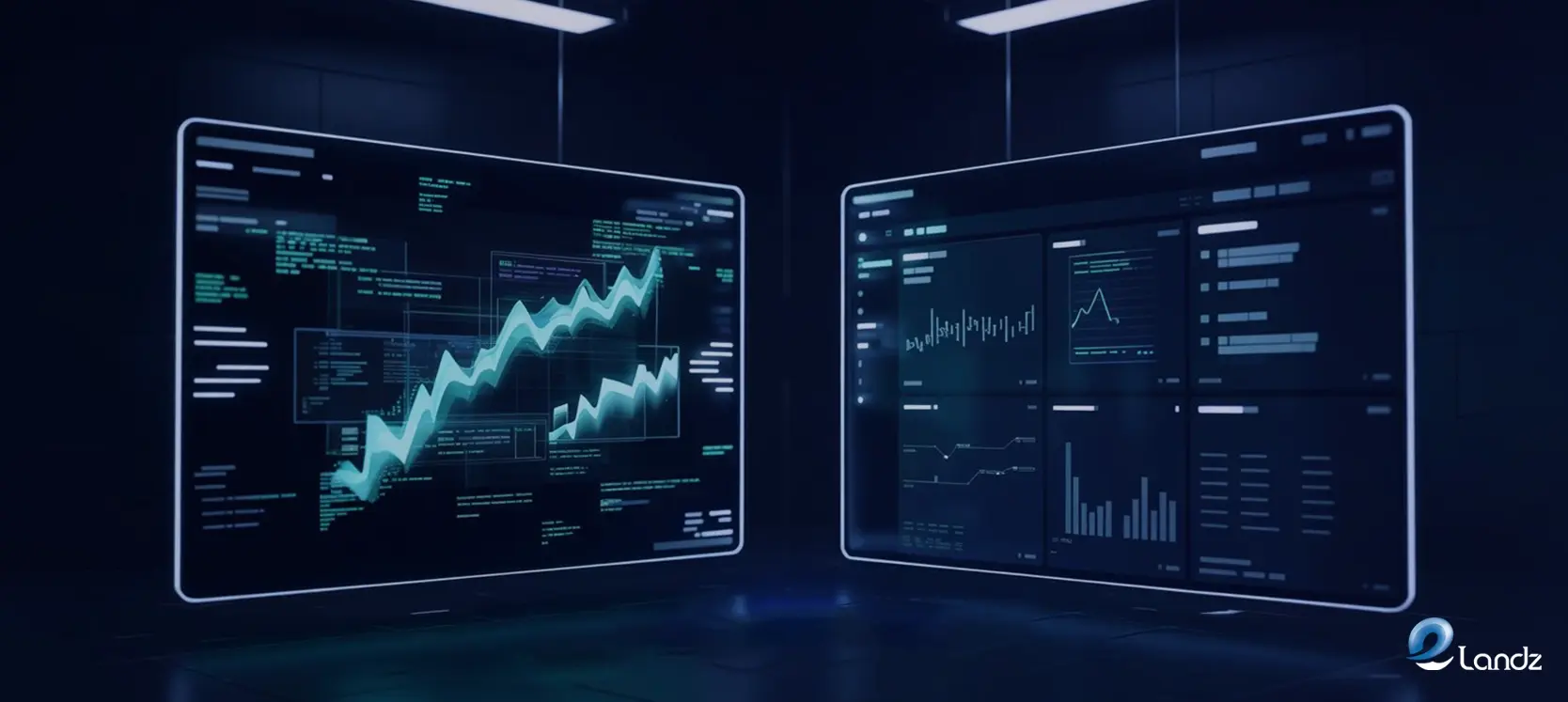
What is Hyperautomation? A Complete Guide to Business Transformation
27 Sep 2025Introduction
What is hyperautomation? It can be defined as a comprehensive business strategy focused on automating every possible task and process within an organization. Unlike traditional automation, which targets individual tasks, hyperautomation takes a holistic approach by combining multiple advanced technologies to create intelligent, interconnected systems that can handle complex workflows without requiring human intervention.
This strategy involves the orchestrated use of artificial intelligence (AI), machine learning (ML), robotic process automation (RPA), and other cutting-edge technologies to identify, analyze, and automate business processes at scale. Read on to learn more!
The Technology Foundation Behind Hyperautomation

Several key technologies work together to enable hyperautomation initiatives. Understanding these components helps clarify how this comprehensive approach differs from simpler automation solutions.
Artificial Intelligence and Machine Learning
More than 50% of businesses are using AI.
AI and ML serve as the intelligence layer of hyperautomation systems. These technologies enable automated processes to learn from data, adapt to new situations, and make decisions that previously required human judgment. Machine learning algorithms can analyze patterns in business data to predict outcomes, identify inefficiencies, and suggest improvements to existing processes.
Natural language processing (NLP) enhances AI capabilities by enabling systems to comprehend and interpret human language, facilitating the automation of tasks that involve written communication, customer service interactions, and document analysis. Computer vision technology allows systems to interpret visual information, expanding automation capabilities to include image recognition, quality inspection, and document processing tasks.
Robotic Process Automation
RPA forms the foundational layer for many hyperautomation initiatives. This technology creates software robots that can interact with digital systems in the same way humans do, clicking buttons, entering data, and navigating through applications. When combined with AI capabilities, RPA systems can handle not just structured data but also unstructured information, making them far more versatile than traditional automation tools.
Advanced RPA platforms can manage thousands of automated processes simultaneously while maintaining security standards, integration requirements, and compliance protocols necessary for enterprise-level operations.
Process Discovery and Intelligence
Process discovery technology uses AI and data analytics to map out existing business processes, identifying how work actually flows through an organization. This capability is crucial for hyperautomation because it reveals hidden inefficiencies, bottlenecks, and opportunities for improvement that might not be obvious to human observers.
Process intelligence tools create detailed visualizations of how business operations function, providing the foundation for making informed decisions about which processes should be automated first and how different automated systems should be connected to work together effectively.
Integration and Orchestration Platforms
Hyperautomation necessitates a seamless integration between various systems, applications, and data sources. Integration platforms and APIs enable automated processes to communicate across various software environments, ensuring that data flows smoothly and processes can be coordinated across different departments and functions.
Low-code and no-code development platforms democratize automation by enabling business users with limited technical skills to create and modify automated workflows. This capability is essential for scaling hyperautomation across an entire organization, as it reduces dependence on specialized IT resources.
How Hyperautomation Transforms Business Operations

The implementation of hyperautomation follows a systematic approach that transforms how organizations operate at multiple levels.
Discovery and Analysis Phase
The journey begins with a comprehensive analysis of existing business processes. Advanced process mining tools examine how work currently flows through the organization, identifying repetitive tasks, manual handoffs, and areas where delays commonly occur. This analysis creates a digital representation of current operations, often called a digital twin, which serves as the foundation for designing improved automated workflows.
Data quality assessment is performed to ensure that information feeding into automated systems meets the standards necessary for reliable operation. This phase also involves evaluating the technical infrastructure and determining what upgrades might be necessary to support expanded automation initiatives.
Automation and Orchestration Phase
Once processes have been analyzed and prioritized, the actual automation work begins. Different types of processes require different technological approaches. Simple, rule-based tasks might be handled by RPA bots, while more complex decision-making processes might require AI-powered systems that can analyze data and make recommendations.
The orchestration aspect ensures that individual automated processes work together as part of larger workflows. For example, when a customer places an order, automated systems might simultaneously check inventory levels, process payment information, update customer records, and initiate shipping procedures, all without human intervention.
Monitoring and Optimization Phase
Continuous monitoring ensures that automated processes perform as expected and identifies opportunities for further improvement. Advanced analytics provide insights into system performance, highlighting areas where processes might be optimized or where additional automation opportunities exist.
This phase also involves managing the human aspects of automation, including retraining employees for new roles and ensuring that the benefits of automation are realized across the organization.
Benefits of Hyperautomation Implementation
Organizations that successfully implement hyperautomation strategies typically experience significant improvements across multiple dimensions of their operations.
Enhanced Operational Efficiency
Automated processes consistently outperform manual operations in terms of speed, accuracy, and reliability. Tasks that previously required hours or days can often be completed in minutes or seconds. Error rates decrease dramatically when human intervention is reduced, leading to higher quality outputs and fewer costly mistakes.
The ability to operate continuously, without breaks or downtime, means that business processes can run around the clock, improving responsiveness to customer needs and market opportunities.
Cost Reduction and Resource Optimization
By automating routine tasks, organizations can redeploy human resources to higher-value activities that require creativity, strategic thinking, and complex problem-solving skills. This shift not only reduces operational costs but also improves employee satisfaction by eliminating repetitive, mundane work.
Automated systems also reduce the costs associated with errors, rework, and delays that commonly occur in manual processes. The cumulative effect of these improvements often results in substantial cost savings over time.
Improved Customer Experience
Hyperautomation enables organizations to respond to customer needs more quickly and consistently. Automated customer service systems can handle routine inquiries instantly, while more complex issues are routed to human agents who have access to comprehensive, up-to-date information about each customer’s history and preferences.
Personalization becomes more feasible when automated systems can analyze customer data and tailor interactions based on individual preferences and behaviors. This capability leads to more satisfying customer experiences and stronger brand loyalty.
Enhanced Data-Driven Decision Making
Automated systems generate detailed data about business operations, creating opportunities for more informed strategic decision-making. Real-time dashboards and analytics provide managers with insights into process performance, resource utilization, and emerging trends that might affect business outcomes.
This data-driven approach enables organizations to identify problems before they become serious issues and to capitalize on opportunities more quickly than competitors who rely on manual processes and delayed reporting.
Scalability and Flexibility
Automated systems can be scaled up or down more easily than manual processes, allowing organizations to respond quickly to changes in demand or market conditions. New processes can be implemented rapidly using established automation platforms and frameworks.
The flexibility of modern automation technologies also means that processes can be modified or updated as business requirements change, without the extensive retraining and reorganization that would be necessary with manual systems.
Industry Applications and Use Cases
Hyperautomation has found applications across virtually every industry, with specific implementations tailored to the unique needs and challenges of different sectors.
Healthcare Transformation
Healthcare organizations have embraced hyperautomation to address challenges related to patient care, administrative efficiency, and regulatory compliance. Automated systems handle appointment scheduling, prescription refills, and insurance claim processing, reducing administrative burden on medical staff and improving patient access to care.
Clinical decision support systems use AI to analyze patient data and provide recommendations for treatment options, while automated monitoring systems track patient vital signs and alert medical staff to potential complications. These applications improve patient outcomes while reducing costs and minimizing the risk of medical errors.
Financial Services Innovation
Banks and financial institutions use hyperautomation to streamline operations ranging from loan processing to fraud detection. Automated systems can analyze credit applications, verify documentation, and make approval decisions in minutes rather than days or weeks.
Risk assessment processes benefit from AI-powered analysis that can identify patterns and anomalies in financial data that might indicate fraudulent activity or credit risk. Customer service operations are enhanced by automated systems that can handle routine banking transactions and provide personalized financial advice based on individual customer profiles.
Manufacturing Excellence
Manufacturing companies implement hyperautomation to optimize production processes, improve quality control, and manage supply chains more effectively. Predictive maintenance systems use sensor data and AI analysis to identify equipment that needs maintenance before failures occur, reducing downtime and maintenance costs.
Quality control processes benefit from computer vision systems that can inspect products more consistently and accurately than human inspectors. Supply chain optimization uses automated systems to monitor inventory levels, predict demand, and coordinate with suppliers to ensure that materials are available when needed.
Retail and E-commerce Evolution
Retail organizations use hyperautomation to enhance customer experiences online and in physical stores. Automated systems handle inventory management, ensuring that popular products remain in stock while minimizing excess inventory of slow-moving items.
Customer service operations are enhanced by automated systems that can handle routine inquiries and provide personalized product recommendations based on purchase history and browsing behavior. Marketing campaigns can be automatically tailored to individual customer preferences and delivered through the most effective channels.
Overcoming Implementation Challenges

While hyperautomation offers significant benefits, organizations often face challenges when implementing these comprehensive automation strategies.
Cultural and Organizational Resistance
Employee concerns about job security and changes to familiar work processes can create resistance to automation initiatives. Successful organizations address these concerns through transparent communication about the goals and benefits of automation, along with retraining programs that help employees develop new skills suited to working alongside automated systems.
Change management strategies that involve employees in the automation planning process and clearly communicate how automation will enhance rather than replace human capabilities help build support for transformation initiatives.
Technical Infrastructure Requirements
Many organizations discover that their existing IT infrastructure is not adequate to support comprehensive automation initiatives. Legacy systems may lack the integration capabilities necessary for automated processes to access and share data effectively.
Addressing these challenges often requires significant investment in new technology platforms and infrastructure upgrades. However, organizations that make these investments typically find that the long-term benefits far outweigh the initial costs.
Data Quality and Governance
Automated systems depend on high-quality, accurate data to function effectively. Organizations often need to implement data governance programs to ensure that information feeding into automated systems meets quality standards and remains secure throughout processing.
Data privacy and security considerations become more complex when automated systems handle large volumes of sensitive information. Robust security frameworks and compliance monitoring systems are essential for maintaining customer trust and meeting regulatory requirements.
Vendor Selection and Integration
The rapidly expanding marketplace of automation technologies can make it difficult for organizations to select the right combination of tools and platforms for their specific needs. Successful implementations often require careful evaluation of vendor capabilities, integration requirements, and long-term support considerations.
Organizations increasingly seek comprehensive automation platforms that can integrate multiple technologies rather than attempting to manage numerous individual tools from different vendors.
Future Directions and Emerging Trends
Hyperautomation continues to evolve as new technologies become available and organizations gain experience with implementation strategies.
Artificial Intelligence Agents
Advanced AI agents represent the next frontier in hyperautomation, with capabilities that extend far beyond traditional RPA systems. These intelligent agents can understand context, learn from experience, and make complex decisions that adapt to changing conditions.
Multi-agent orchestration systems enable different AI agents to work together on complex tasks, sharing information and coordinating their activities to achieve business objectives that would be impossible for individual automated systems to handle.
Enhanced Integration Capabilities
Future hyperautomation platforms will offer even more sophisticated integration capabilities, making it easier to connect automated processes across different systems, departments, and even organizations. Cloud-native architectures will provide the scalability and flexibility necessary to support enterprise-wide automation initiatives.
API-driven integration strategies will enable organizations to create automated workflows that span multiple software platforms and data sources without extensive custom development work.
Predictive and Prescriptive Analytics
Advanced analytics capabilities will enable automated systems not only to respond to current conditions but also to predict future trends and recommend proactive actions. This evolution will transform hyperautomation from a reactive optimization strategy to a proactive business intelligence capability.
Real-time decision-making systems will be able to analyze market conditions, customer behavior, and operational data to make strategic recommendations and automatically implement approved actions.
Getting Started with Hyperautomation
Organizations considering hyperautomation initiatives should approach implementation strategically, beginning with pilot projects that demonstrate value and build organizational confidence in automation technologies.
Assessment and Planning
The first step involves a comprehensive assessment of current business processes to identify automation opportunities and prioritize initiatives based on potential impact and implementation complexity. This assessment should include evaluation of technical infrastructure, data quality, and organizational readiness for change.
Developing a clear vision for how hyperautomation will support business objectives helps ensure that automation initiatives align with strategic goals and deliver meaningful results.
Pilot Implementation
Starting with pilot projects allows organizations to gain experience with automation technologies while minimizing risk. Successful pilots typically focus on well-defined processes that offer clear benefits and can be implemented relatively quickly.
Lessons learned from pilot implementations inform the development of broader automation strategies and help organizations build the capabilities necessary for enterprise-wide transformation.
Scaling and Optimization
As organizations gain experience and confidence with automation technologies, they can expand implementations to cover more complex processes and integrate automated systems across different departments and functions.
Continuous optimization ensures that automated processes continue to deliver value as business requirements evolve and new technologies become available.
FAQs
Check out this FAQ section!
What technologies are typically used in hyperautomation?
Hyperautomation relies on a combination of robotic process automation (RPA), artificial intelligence, machine learning, process discovery tools, and integration platforms working together. Additional technologies include natural language processing, computer vision, intelligent document processing, and low-code development platforms that allow business users to create automated workflows.
Which industries benefit most from hyperautomation implementation?
Healthcare, financial services, manufacturing, and retail industries see the greatest benefits from hyperautomation due to their high volume of repetitive processes and regulatory requirements. These sectors use automated systems for everything from patient care and loan processing to quality control and inventory management.
What challenges do organizations face when implementing hyperautomation?
Organizations commonly encounter cultural resistance from employees and discover their existing IT infrastructure is inadequate for comprehensive automation. Data quality issues and the complexity of choosing appropriate technologies from numerous available options can also create significant implementation challenges.
What is hyperautomation and how does it differ from regular automation?
Hyperautomation is a comprehensive business strategy that uses multiple advanced technologies working together to automate as many processes as possible within an organization. It combines AI, machine learning, and robotic process automation to create intelligent systems that handle complex, interconnected workflows from start to finish.
How long does it typically take to implement hyperautomation in an organization?
Small pilot projects might be completed in three to six months, while comprehensive enterprise-wide transformations can take several years, depending on organizational complexity. Most organizations follow a phased approach, starting with pilot implementations and gradually expanding across different departments and processes.


